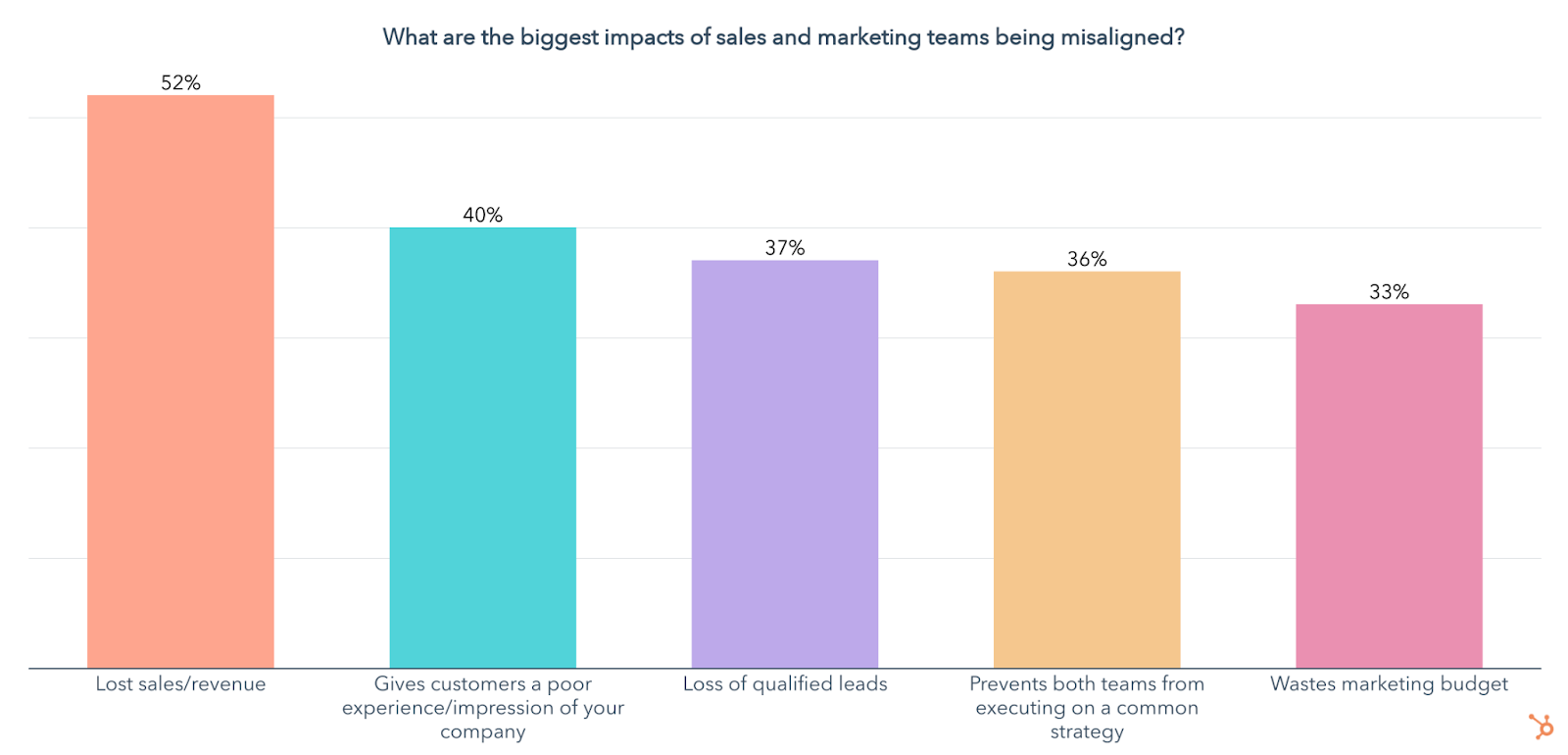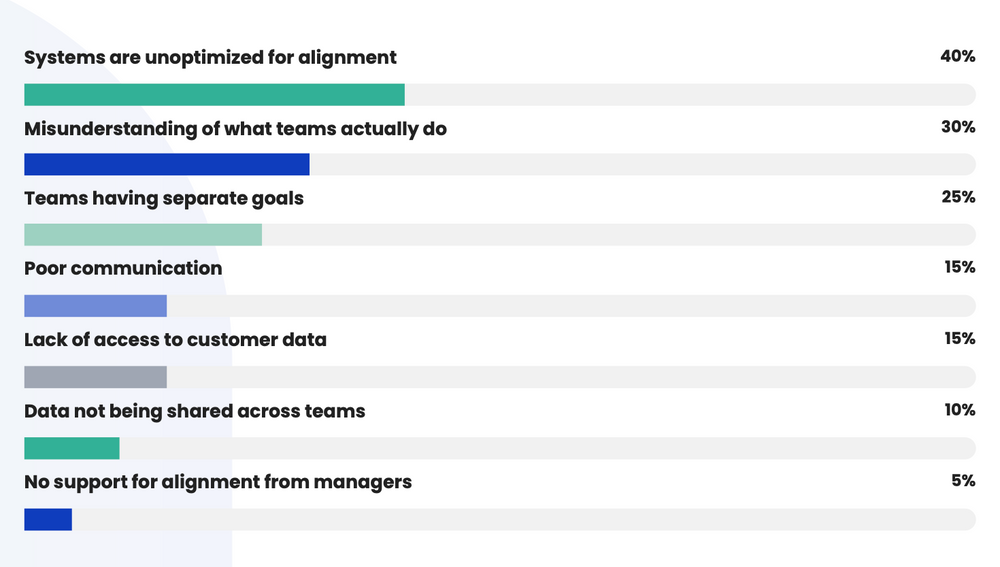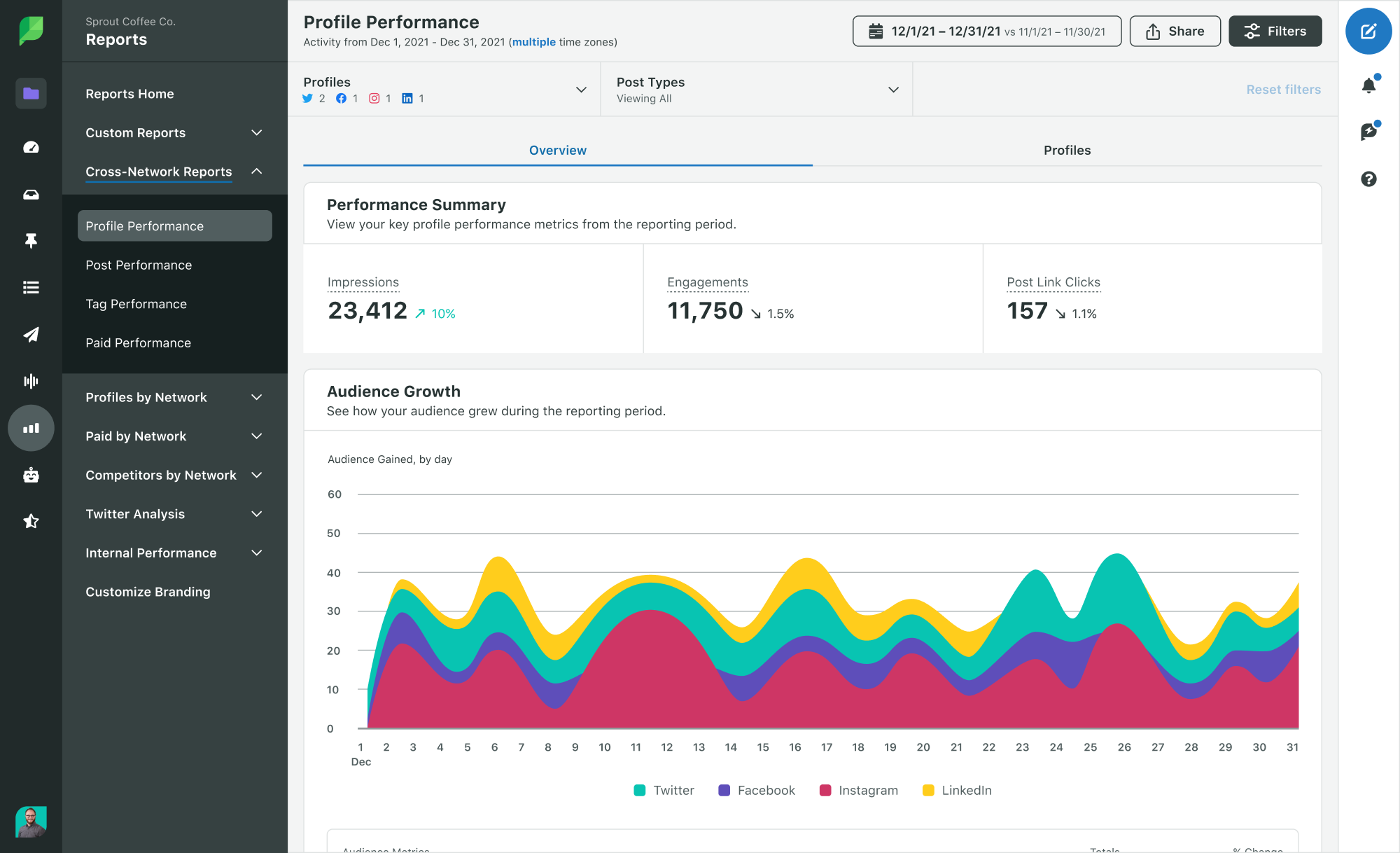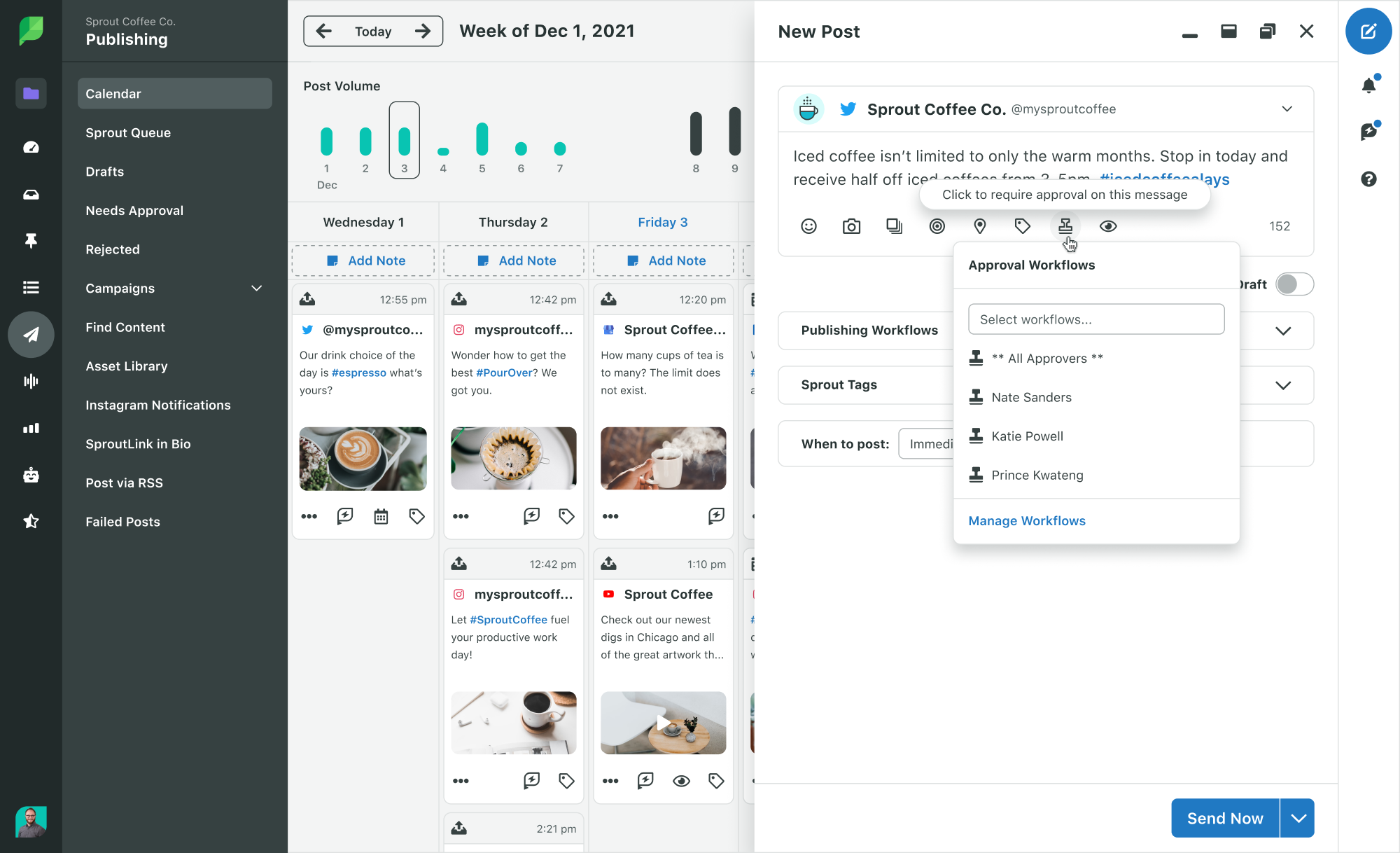Organizations are constantly looking for strategies to increase leads, customer satisfaction and revenue.
An effective way to achieve this is through sales and marketing alignment.
The new reality is that sales and marketing are continuously and increasingly integrated. Marketing needs to know more about sales, sales needs to know more about marketing and we all need to know more about our customers.Jill Rowley
Salesforce
When your marketing team is enabling sales, it becomes easier to achieve target goals.
In this guide, we will investigate the benefits and challenges of sales and marketing alignment. We will also discuss some of the best strategies and share success stories:
- What is sales and marketing alignment?
- Consequences of sales and marketing misalignment
- Overcoming common challenges to sales and marketing alignment
- Benefits of sales and marketing alignment
- How to align sales and marketing teams
What is sales and marketing alignment?
Sales and marketing alignment, also called smarketing, refers sales and marketing team collaboration within a business to achieve common goals.
True alignment involves unified communication and mutual support between the two functions. Both teams cooperate to create cohesive and customer-centered strategies that drive revenue growth and improve customer experience.
Research by Freshworks showed 72% of leaders believe that by aligning their sales and marketing functions, they can boost brand performance.
Brands like Superoffice are already seeing the benefits of alignment on their bottom line with a 34% increase in revenue following integration.
Consequences of sales and marketing misalignment
Now we have defined sales and marketing alignment, let’s discuss some of the issues that arise when these teams work as separate functions.
Wasted resources
When sales and marketing teams operate independently, resources like time, materials and budget may go to waste.
One key sign of sales and marketing misalignment is frustration from your sales team about the quality of leads. If sales are disqualifying a large percentage of marketing qualified leads (MQLs) then misalignment is likely to be an issue.
Conversely, if marketing collateral is not being used by sales or target market engagement rates are low, this also indicates a problem.
In today’s competitive landscape, marketing campaigns should be informed by feedback from the sales team. Some of the challenges sales teams face during outreach may provide insights for creating conversion-driven marketing campaigns.
Lack of cooperation can lead to ineffective messaging and misallocation of budget.
Erosion of consumer trust
Misalignment amongst revenue teams may lead to inconsistent messaging. Differing promotional copy, blog posts, product descriptions and sales pitches may erode consumer trust.
This negatively affects the overall customer experience.
Missed opportunities
Dubious prospects buy nothing. In fact, 62% of people are not loyal to the brand if it does not provide an experience tailored to their needs.
Sales and marketing misalignment may cause your business to miss out on a lot of opportunities. You are less likely to be aware of the points on the buying journey where your leads drop off.
Conflicting messaging also disrupts your customer experience. This means your company risks losing valuable opportunities to connect with consumers. The loss of these opportunities can impact return on investment (ROI), customer retention rate and brand trust.
Decreased sales and revenue
Most concerning of all, in the HubSpot 2023 Sales Trend Report, 52% of leaders say low revenue is the biggest impact of misaligned sales and marketing functions.
Inconsistent messaging, missed opportunities and ineffective campaigns lengthen the sales cycle. Little wonder why 40-70%+ of qualified leads are still not ready to buy.
If your revenue functions are not in sync, the biggest impact is likely to be on your business’s bottom line.

Overcoming common challenges to sales and marketing alignment
Aligning revenue strategy is not without its challenges, some of the most common include,
Misalignment in goal setting and metrics
When sales and marketing teams are trying to reach differing goals, it becomes hard to track progress and achieve overall business objectives.
Instead of different measurement approaches, work together to develop shared metrics. This way, it becomes easy to detect broken processes or where leads drop off on the buyer journey.
By working towards common objectives valuable growth opportunities are less likely to be missed.
Lack of communication and collaboration
When there’s little or no communication between the two teams, getting tangible results can be more difficult.
Communication gaps lead to misaligned messaging, ineffective lead handoffs and long sales cycles. Regular cross-functional team meetings and project collaboration dashboards are just two ways to improve understanding between teams.
Inadequate data-sharing and integration
According to LinkedIn State of Sales Report 2022, 45% of salespeople say incomplete data is their biggest challenge.
Siloed data and poor integration systems can frustrate teams’ efforts and hurt a brand’s productivity.

Benefits of sales and marketing alignment
Companies who align their marketing and sales teams for improved effectiveness enjoy a number of benefits including:
Better understanding of target audiences
Utilizing sales and marketing data when creating buyer personas ensures a more accurate picture of the person or business likely to purchase your product. Aligned personas help both departments understand target audiences’ challenges, goals and objections at every stage of the customer journey. This helps deliver consistent and personalized messaging and experiences throughout the sales cycle.

Improved customer experience
Today, 56% of consumers will become repeat buyers if they enjoy personalized experiences.
Sales marketing alignment removes the artificial division that can exist between the two departments leading to a more comprehensive view of the customer journey map. Ultimately this should lead to improved customer experience.
Revenue-aligned strategy
Rather than chase separate goals, both teams develop a combined revenue-bound strategy.
Both teams engage in collaborative activities and share data to support mutual success. The marketing team can provide sales with insights about target customers, their challenges, desires and industry trends. In turn, sales teams can provide feedback on their outreach calls to help improve marketing collateral.
By creating this collaborative, revenue-based strategy, these teams can improve lead quality, marketing ROI, brand credibility and most importantly revenue.
Better lead generation
Sales-marketing collaboration creates a clear understanding of the lead generation and nurturing processes. By working together to provide relevant resources, revenue teams can improve the quality of leads generated.
Marketing content tailored to the buying journey resonates with prospects. Your smarketing functions can develop an omnichannel strategy to collect and nurture prospects.
This cooperation ensures that the lead management process is seamless. Target customers receive coherent and personalized messaging through their preferred channels.
Increased revenue
Alignment ensures the smooth handoff of leads from marketing to sales. Both teams jointly develop processes for lead generation and scoring. This ensures that the marketing team prioritizes leads based on their engagement and readiness to buy. The sales team, on the other hand, receives sales-qualified leads (SQLs) ready to purchase.
B2B brands are improving revenue through smarketing. For example, this alignment is how Alice de Courcy, Chief Marketing Officer at Cognism, scaled the company from $3M to $50M annual recurring revenue (ARR).

Alice and the marketing team tested the quality of leads they send to the sales department. By walking in their shoes and calling these leads, they found gaps they could fill with their marketing content.
Sales and marketing alignment leaves less room for blind spots. As a revenue team, they’re aware of drawbacks that can affect the customer experience. In turn, they can act proactively to fix them and increase revenue. After all, 70% of buyers will spend more with brands that provide smooth customer experiences.
Stay ahead of the competition
Many marketing teams analyze competitor brands to uncover opportunities, weaknesses and potential threats.
When these insights are shared a revenue team can take advantage of opportunities and gaps identified, develop growth processes and mitigate threats.
How to align sales and marketing teams
Looking for ways to facilitate marketing and sales alignment for improved brand effectiveness? Here are five practical steps to enhance cooperation:
Develop shared goals and metrics
Sales and marketing teams often have different goals to reach and key performance indicators (KPIs) to track. This is why alignment seems challenging.
Traditionally, sales teams focus on revenue generation, while marketing teams acquire leads. But since marketing and sales are both responsible for bringing in revenue, it may make sense to unite them under one title. The revenue team.
Revenue teams should measure results in the same way. Objectives goals and KPIs are aligned. By collaborating on target goals, both teams can work towards the same outcome. That is, increasing revenue generation and customer acquisition.

Creating effective communication channels
Brands become smarter when their revenue functions share ideas.
Encourage information sharing through regular meetings, review sessions, joint strategy calls and cross-functional training. Open communication ensures alignment regarding the target audience, their needs and challenges.
Collaborative content creation and distribution
The buyer journey is not linear. This is why delivering consistent messaging at every stage is necessary to convert leads.
This won’t work if both teams are siloed. Alignment encourages collective ownership of the buyer journey. Areas of collaboration could include content ideation, blog contribution, social engagement and guest speaking. This allows them to create unified marketing materials that resonate with target customers.

Implementing integrated technology solutions
Technology has made sales and marketing alignment easier.
Implementing integrated technology solutions will allow for simplified data sharing and collaboration. Research by the Revenue Marketing Alliance showed 78% of successful smarketing teams had integrated technology that shared data.

Here are some technology solutions to foster sales and marketing alignment:
- Customer relation management (CRM) systems
- Social media management tools
- Marketing automation platforms
- Sales enablement software
- Shared project management tools
- Data analytics and business intelligence tools
Smarketing is less complex using collaborative solutions that integrate with other tools. Sprout Social, for example, integrates seamlessly with a number of marketing tools. It connects with CRMs, helpdesks and workflow tools to improve team collaboration.
By working in one place, both teams can share insights such as persona details, social data, lead generation and outreach summary. This helps work towards achieving the same goals.
Continuous feedback and improvement
Another way to foster sales and marketing cooperation is through ongoing team feedback loops.
Certain strategies might not go as planned. Hitting set quotas could be slow and some processes could become broken. Developing a strategy for regular feedback around what is working and what needs to be changed will further support alignment.
Increase productivity through sales-marketing alignment
Sales and marketing alignment is more than just a buzzword, it’s a game-changer. Brands are shifting their sales and marketing teams from siloed units into revenue teams. By doing this, you can create a unified workflow that improves customer experience and brand revenue.
Say goodbye to wasted resources and learn how to get the most from your revenue efforts through an omnichannel strategy.
The post Sales and marketing alignment for improved business effectiveness appeared first on Sprout Social.


